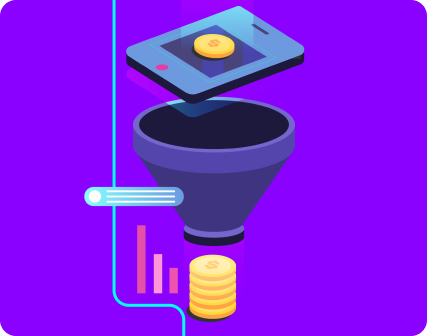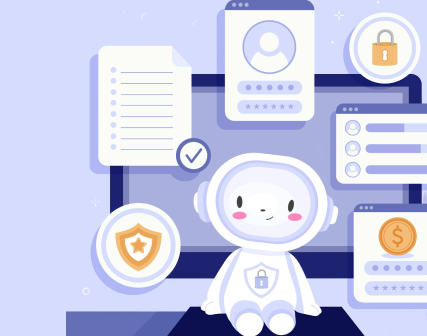Key UX/UI design peculiarities for logistic web products
Diversity of the target audience, complicated information architecture, different user flows, and a vast amount of data to be presented – these are just some peculiarities that developers usually face while working on logistics projects.
Since logistics is one of the most advanced and complicated niches, many people wonder how to develop a web product that satisfies customer’s expectations within available means.
After 14 years on the market, our UX designers from Turum-burum are ready to share some ideas on how to create a web product that meets the current needs of the logistics industry and adapts to future challenges.
Flawless UX/UI and logistics: why should these two go along?
The backbone of global trade, logistics involves the processes of transportation coordination, warehousing, inventory management, shipment tracking, and many more. We know that advanced digital technologies such as cloud computing, the Internet of Things (IoT), drones, and robotics have revolutionized the field, making it more efficient and flexible, but at the same time, we frequently underestimate the importance of appropriate UX/UI solutions for this market.
By applying the optimal arrangement of blocks, buttons, links and other page elements, you can improve the user experience by making interaction with your web product fast and intuitive. And the main thing with the logistics industry is that a good UX/UI design can ease not only the lives of customers, but stakeholders and business owners as well.
UX/UI design for Logistics: main challenges
Designing UX/UI for logistics comes with several unique challenges due to the industry's complexity and its users' diverse needs. Here are some main challenges UX designer must take into account while working on the project:
- The diversity of the target audience:
When developing a logistics web product you have to consider all types of users who will be using it: clients, company managers, stakeholders, business owners, etc. Therefore, it is essential to provide a well-thought and flawless customer flow for all of them within one interface, which might be a challenging task.
- Information architecture
If the search for information becomes too difficult or too slow, customers may leave the website, and once they have, it will be very difficult to get them back. Since logistics web products usually contain lots of data, it is essential to choose an appropriate information architecture (the logic and sequence of the website’s elements and blocks) that prioritizes data and presents it in an understandable manner.
For example, while developing a website for a logistics company, the Turum-burum team developed a well-thought-out information architecture that aims to help users find the information they need and understand how website elements are interconnected.

- Difficulties in understanding customer needs
People usually perceive the product’s interface as part of the brand and make an overall impression about the company based on it. Here we frequently face the problem that businesses don’t understand their target audience. It also happens with the logistics market, where the target audience is very diverse. And if the company fails to create a user-friendly interface for its customers, then it loses points.
For that reason, we recommend conducting a detailed study of the target audience and creating a customer persona profile. This step includes collecting data on the target audience's age, marital status, profession, and average income, as well as their expectations and requirements from e-commerce and factors that negatively affect their user experience.

- Large number of people involved in business processes
Logistics companies typically employ many people who are empowered to make important decisions for the brand. The key advantage of this approach is that there is always a person who has a deeper understanding of how a particular aspect of the business works and can identify its needs and problems. That's why Turum-burum team usually consults with narrowly focused specialists when working on the interface. After talking to such an expert, we are more aware of what needs to be considered when creating an interface.
- Service delivery speed is a key
In this niche, the speed of the interface's reaction and communication with the user are of paramount importance. Therefore, the interface should be efficient, free of unnecessary steps, and intuitive. To make this possible, it is essential to build user flows for all types of users based on analytics, heatmap data, and customer requirements. Moreover, you can add chatbots so that customers can quickly consult with the company’s representatives and deal with their problems.
5 tips to boost customer experience for the logistic market
After getting acquainted with the challenges of developing digital logistics solutions, things might seem quite complicated but experienced UX/UI designers know how to deal with them.
Below, you will find 5 practical recommendations on how to develop a website for a logistics company that meets even the most sophisticated customer requirements.
- Dashboard: providing data visualization
Human memory is limited, and attention is often scattered. However, by placing all available indicators on a graph, our brains can effectively analyze and process large amounts of information.
And that’s what you can do by implementing dashboards into logistics web products. Note that for different types of customers, these dashboards must contain different information but perform the same task – provide real-time visualizations of the processes that are hiding behind the interface.

- Maps & Geolocation
If the app's homepage displays a map of its current location, users may quickly orient themselves and become more engaged with the service. There should also be signs for recognizable landmarks, commonly visited destinations such as major museums, and all transit terminals. Your transportation application must also have GPS capability to provide drivers with up-to-date traffic data and track their movements.
- Advanced Personalization
87% of users worldwide are more loyal to brands that understand their ‘pains’ and needs.
Therefore, the personalization algorithm plays a crucial role in interface design. This tool helps identify users' specific interests and deliver relevant content to them. As a result, your logistics web product can appeal to a wider range of users.
For example, for business owners, it could be interface blocks with the most reliable stakeholders or the best market offers. Moreover, shippers should be able to compare various carriers and their rates for the required services through the app. This guarantees that they obtain the most competitive prices available in the market. At the same time, for customers, you can provide an option of automated storing and completing personal data so that they don’t have to fill in the same information every time they interact with the web product.

- Service design
The interface of a logistics web product should be focused on clear and intuitive navigation, allowing users to easily access the features and options they need. It should combine a visually appealing design with a clean and structured layout, ensuring that users can quickly understand and interact with the various elements of the app or website. For this niche, responsiveness is a priority to ensure a comfortable experience on different devices with different screen sizes.
For that reason, it is better to use plain colors, commonly known icons, button shapes, etc. At the same time, you can add customized blocks with bright images to make visual accents and draw customer’s attention to some of the interface elements.

- Real-Time Updates and Notification
Implementing real-time updates and notifications is crucial for maintaining efficiency and reliability in logistics operations. It ensures that any changes to shipment details, such as delivery times, routes, or unexpected delays, are immediately communicated to all relevant parties, including the shipper, receiver, and transporter. By providing instantaneous alerts, real-time updates help prevent potential issues before they escalate, keeping the entire logistics process on track and minimizing the risk of delays and miscommunications.
Moreover, real-time notifications enhance transparency and build trust among all parties involved. Shippers can be confident that their goods are being monitored and managed effectively, while receivers can plan their operations more efficiently, knowing exactly when to expect deliveries.

Drawing the line
When designing a logistics website, it's crucial to consider all the peculiarities of the market and use them to your advantage. And even though logistics include various complicated processes, your main aim is to develop such an intuitive and easy-to-use interface that customers won’t even think about logistics as something challenging.
To make it possible, you have to focus on clear user flows for each type of user, intuitive navigation, real-time tracking features, and a flawless customer experience. Following the above-mentioned tips will help you create a logistics website that stands out in the competitive market and meets the dynamic demands of the logistics industry. Turum-burum team of UX senior specialists and CRO analysts will also be happy to help with your logistics project.
FAQ
Question reference
Answer reference
More real-world Turum-burum cases?
Review our vast portfolio of cases in a variety of business fields to make sure of our expertise.
Go to Portfolio


.png)












.png)



